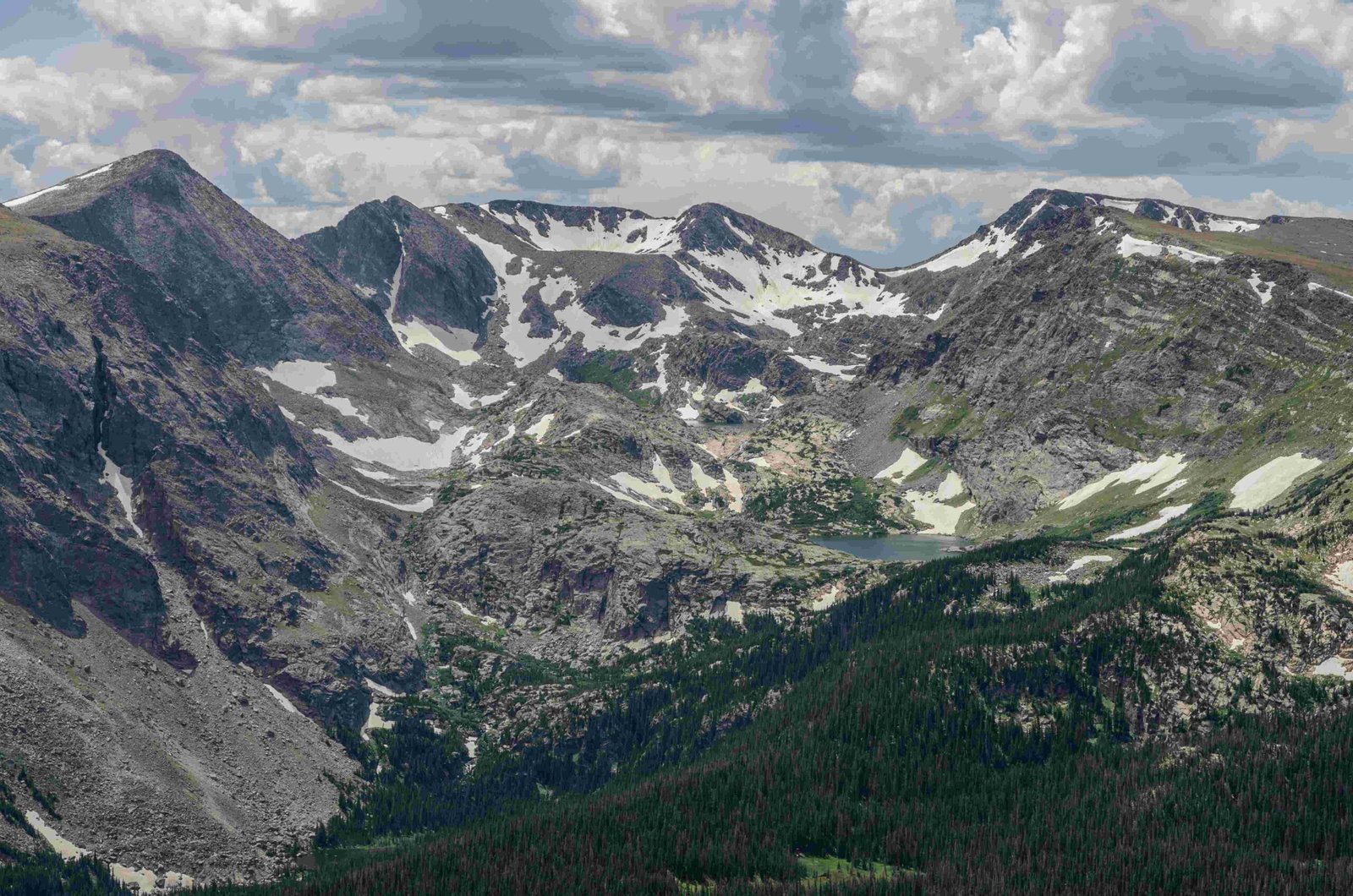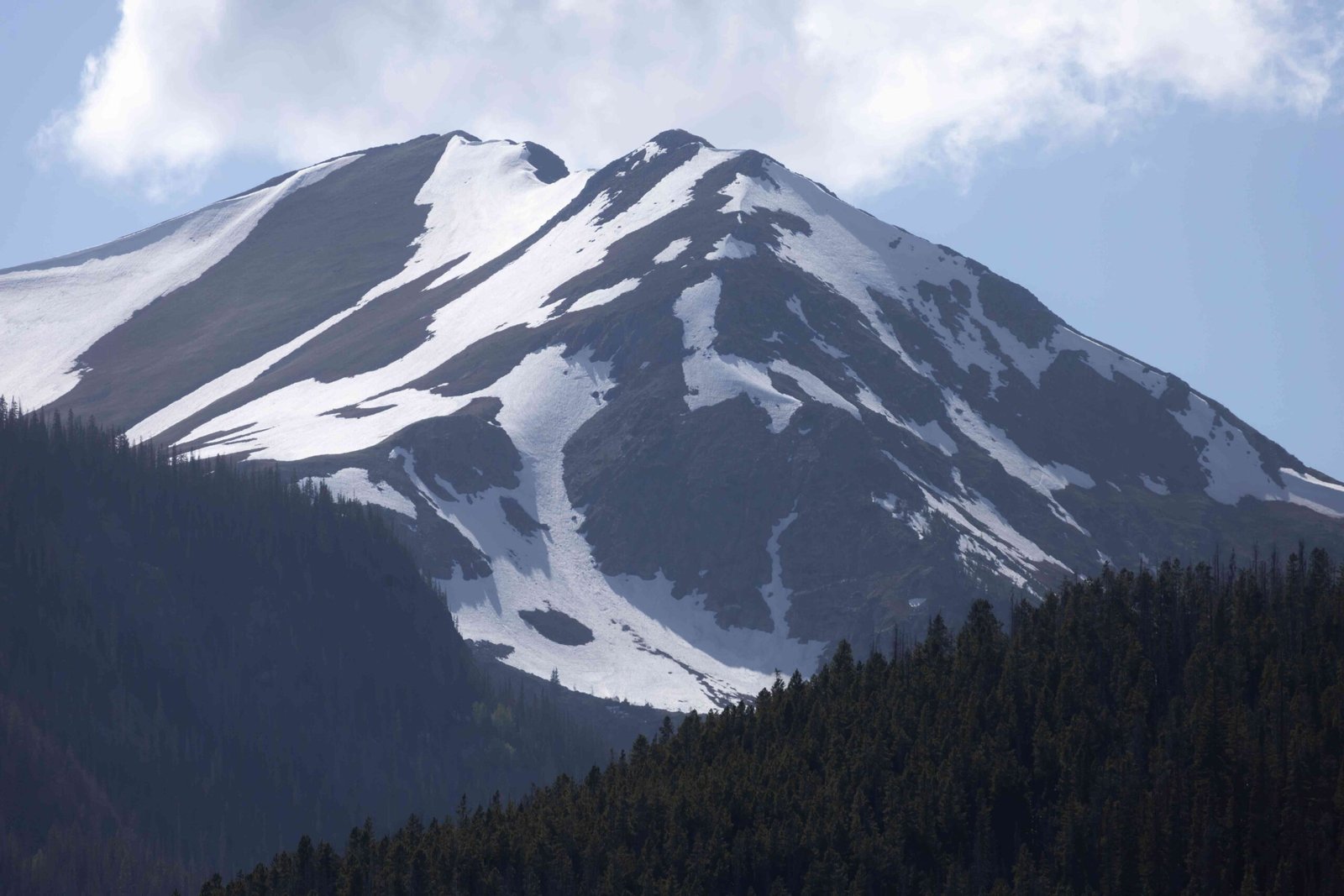Rocky Mountain National Park offers exceptional opportunities for Milky Way viewing due to its dark skies and high elevation. The park’s diverse landscapes provide stunning foregrounds for astrophotography, with accessible locations like Bear Lake and Trail Ridge Road. Optimal viewing occurs from March to October, especially during summer months and new moon phases. Visitors can capture breathtaking images of the Milky Way with proper equipment and techniques while enjoying the park’s natural beauty.
Where Are the Best Spots for Milky Way Viewing in Rocky Mountain National Park?

Rocky Mountain National Park boasts several prime locations for observing the Milky Way:
- Bear Lake
- Easily accessible
- Stunning reflections on calm nights
-
GPS: 40.3122, -105.6364
-
Mills Lake
- Requires a hike
- Spectacular mountain views
-
GPS: 40.2903, -105.6333
-
Trail Ridge Road (Forest Canyon Overlook)
- High-altitude viewing
- Open May to October
-
GPS: 40.3944, -105.6933
-
Poudre Lake at Milner Pass
- Accessible spot
- Panoramic night sky views
When Is the Best Time to See the Milky Way in Rocky Mountain National Park?

The optimal times for Milky Way viewing in Rocky Mountain National Park are:
- Season: March to October, with peak visibility in summer
- Moon Phase: New moon or within a week before/after
- Best Months: June to September for Galactic Center visibility
| Month | Visibility | Moon Phase Recommendation |
|---|---|---|
| June | Excellent | New Moon ±7 days |
| July | Excellent | New Moon ±7 days |
| August | Excellent | New Moon ±7 days |
| September | Very Good | New Moon ±7 days |
What Equipment Do I Need for Milky Way Photography in Rocky Mountain National Park?
To capture stunning Milky Way photos in Rocky Mountain National Park, you’ll need:
- Camera with manual mode
- Wide-angle lens (10-24mm range)
- Sturdy tripod
- Remote shutter release
- Extra batteries
- Warm clothing
- Headlamp with red light mode
- Optional: Polarizing filter
How Do I Set Up My Camera for Milky Way Shots in Rocky Mountain National Park?
Follow these camera settings for optimal Milky Way photography:
- Set camera to manual mode
- Use a wide-angle lens
- Set ISO between 1600-3200
- Open aperture to f/2.8 or wider
- Set shutter speed to 20-30 seconds
- Focus manually to infinity
- Use RAW format for better post-processing
What Are Some Composition Tips for Milky Way Photography in Rocky Mountain National Park?
Enhance your Milky Way photos with these composition techniques:
- Include foreground elements (mountains, lakes, trees)
- Use the rule of thirds
- Align the Milky Way with interesting landscape features
- Experiment with vertical and horizontal orientations
- Capture reflections in lakes for added depth
- Use the StarWalk2 app to plan your shot
How Do I Deal with Light Pollution in Rocky Mountain National Park?
While Rocky Mountain National Park offers dark skies, follow these tips to minimize light pollution effects:
- Choose locations away from park facilities and roads
- Visit during new moon phases
- Use light pollution filters on your lens
- Avoid using flashlights or headlamps with white light
- Face away from nearby towns or light sources
Are There Any Permits or Regulations for Night Sky Viewing in Rocky Mountain National Park?
No special permits are required for stargazing in Rocky Mountain National Park, but:
- Adhere to park rules and regulations
- Respect quiet hours in campgrounds
- Stay on designated trails
- Practice Leave No Trace principles
- Check for any temporary closures or restrictions
How Can I Enhance My Milky Way Viewing Experience in Rocky Mountain National Park?
To make the most of your Milky Way viewing experience:
- Attend ranger-led night sky programs (summer months)
- Use star charts or astronomy apps to identify constellations
- Allow 20-30 minutes for your eyes to adjust to darkness
- Bring binoculars for detailed viewing
- Pack snacks and hot beverages for comfort
- Consider joining local astronomy clubs for guided sessions
What Safety Precautions Should I Take for Night Sky Viewing in Rocky Mountain National Park?
Ensure a safe Milky Way viewing experience with these precautions:
- Inform someone of your plans and expected return time
- Carry a first aid kit and emergency supplies
- Be aware of wildlife activity at night
- Check weather forecasts and dress appropriately
- Bring extra layers, as temperatures can drop significantly at night
- Carry a reliable light source with backup batteries
- Stay on designated trails and viewpoints
By following these guidelines, you’ll be well-prepared for an unforgettable Milky Way viewing experience in Rocky Mountain National Park. The park’s pristine dark skies and breathtaking landscapes provide the perfect backdrop for observing and photographing the majestic Milky Way. Whether you’re a seasoned astrophotographer or a casual stargazer, Rocky Mountain National Park offers unparalleled opportunities to connect with the night sky and capture its beauty.
References:
1. https://photomagx.com/portfolio-item/rocky-mountain-national-park-milky/
2. https://www.visitestespark.com/blog/post/best-places-to-see-the-stars-in-estes-park/
3. https://www.visitestespark.com/blog/post/see-the-stars-in-estes-park-and-rocky-mountain-national-park/

